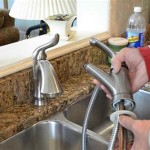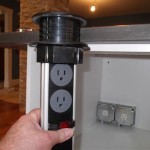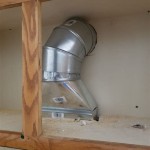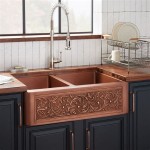Tile For Kitchen: A Comprehensive Guide to IC3 and Keyword Optimization
Selecting the appropriate tile for a kitchen renovation or new construction project involves careful consideration of several factors. Durability, aesthetic appeal, ease of maintenance, and cost are all paramount. However, understanding the technical specifications and leveraging keyword optimization during the selection and purchasing process are equally important, especially when dealing with online retailers and contractors. This article provides a comprehensive guide to kitchen tile selection, focusing on the concepts of Independent Content, Commerce, and Community (IC3) in online marketplaces and the strategic implementation of keywords for effective product discovery.
The kitchen, often considered the heart of the home, demands materials that can withstand high traffic, spills, temperature fluctuations, and consistent cleaning. Tile stands out as a popular choice due to its inherent resilience and diverse design options. From classic ceramic and porcelain to sophisticated natural stone and contemporary glass, the possibilities are vast. Navigating this wide selection necessitates a thorough understanding of different tile types, their properties, and the specific demands of a kitchen environment.
One of the first steps in selecting kitchen tile involves defining the desired aesthetic. This encompasses color palettes, patterns, textures, and overall style. Considerations should extend beyond personal preference to include the kitchen's existing design elements, such as cabinetry, countertops, and lighting. A cohesive design approach ensures that the tile complements the overall space and enhances its visual appeal. Before exploring specific tile types, it's vital to determine the specific application area, whether it's the flooring, backsplash, or countertop. Each area presents distinct requirements concerning durability, slip resistance, and ease of cleaning.
Understanding the different tile materials is crucial for making an informed decision. Ceramic tile, a budget-friendly option, is composed of clay fired at high temperatures. Porcelain tile, a denser and more durable alternative, is also made of clay but fired at even higher temperatures, resulting in greater resistance to water absorption and wear. Natural stone tiles, such as granite, marble, and slate, offer unique textures and natural variations, adding a touch of luxury to the kitchen. Glass tiles, known for their vibrant colors and reflective properties, are often used for backsplashes and decorative accents. The selection of the material should align with the kitchen's usage patterns, budget constraints, and desired aesthetic.
Beyond aesthetics and material composition, technical specifications play a significant role in tile selection. The Porcelain Enamel Institute (PEI) rating measures a tile's resistance to abrasion, ranging from PEI 1 (suitable for light traffic areas) to PEI 5 (suitable for heavy traffic areas). For kitchen flooring, a PEI rating of 3 or higher is generally recommended. Water absorption rate, another crucial factor, indicates the tile's porosity and resistance to moisture penetration. Porcelain tiles typically have a lower water absorption rate than ceramic tiles, making them more suitable for areas prone to spills and moisture. The slip resistance rating, often expressed as a Dynamic Coefficient of Friction (DCOF), is important for kitchen flooring to prevent slips and falls, especially in areas prone to moisture.
Understanding IC3 in Tile Marketplaces
The concept of Independent Content, Commerce, and Community (IC3) is relevant in the context of online tile marketplaces. It represents a framework for evaluating the quality and trustworthiness of online platforms by examining the degree of independence between content (product information, articles, reviews), commerce (transaction processing, pricing), and community (customer forums, social media interactions). A high IC3 score suggests that the platform operates with transparency and avoids conflicts of interest that could compromise the customer experience.
Independent Content refers to the objectivity and accuracy of product information, user reviews, and editorial content. A platform with strong independent content ensures that product descriptions are unbiased, user reviews are authentic, and editorial articles provide valuable insights devoid of promotional bias. This helps customers make informed decisions based on reliable information rather than marketing hype. In the tile industry, this could involve independent testing reports on tile durability, slip resistance, and water absorption, presented without favoring specific brands or products.
Independent Commerce ensures that pricing is fair and transparent, transaction processes are secure, and customer service is responsive and unbiased. A platform with independent commerce avoids price manipulation, hidden fees, and unfair sales tactics. It also provides secure payment gateways and readily available customer support to address any issues that may arise during the purchasing process. In the tile industry, this would involve clear pricing policies, transparent shipping costs, and responsive customer service channels to handle inquiries and resolve complaints.
Independent Community fosters a sense of trust and collaboration among users. A platform with a strong independent community encourages open dialogue, constructive feedback, and genuine interactions between customers. This can involve user forums where customers can share their experiences with different tile products, ask questions, and provide recommendations. It can also involve social media channels where customers can connect with the brand and other users to discuss their projects and share their ideas. The absence of censorship and manipulation in these forums is vital for maintaining trust and credibility.
When evaluating an online tile marketplace, consider the IC3 score to assess its trustworthiness and reliability. Look for platforms that prioritize independent content, commerce, and community to ensure a positive and informed purchasing experience. This can involve reading user reviews, verifying product information from multiple sources, and engaging with the community to gain insights from other customers.
Keyword Optimization for Tile Discovery
Effective keyword optimization is essential for both tile retailers and customers seeking specific products online. Retailers must strategically incorporate relevant keywords into product descriptions, website content, and marketing materials to improve search engine visibility and attract potential customers. Customers, on the other hand, must use specific and relevant keywords when searching for tile products to narrow down their options and find exactly what they need.
Keyword research is the foundation of any successful SEO strategy. It involves identifying the terms and phrases that potential customers use when searching for tile products online. Tools such as Google Keyword Planner, SEMrush, and Ahrefs can be used to identify relevant keywords, analyze search volume, and assess competition. When choosing keywords, it's important to consider both broad terms (e.g., "kitchen tile") and long-tail keywords (e.g., "matte white porcelain kitchen backsplash tile"). Long-tail keywords, while having lower search volume, often have higher conversion rates because they target specific customer needs.
Once relevant keywords have been identified, they must be strategically incorporated into product descriptions. Each product description should include the key features and benefits of the tile, as well as relevant keywords related to its material, color, size, style, and application. For example, a product description for a gray ceramic kitchen floor tile might include keywords such as "gray ceramic tile," "kitchen floor tile," "scratch-resistant," "waterproof," and "easy to clean." Avoid keyword stuffing, which involves excessively repeating keywords in a way that sounds unnatural. Instead, focus on writing clear, concise, and informative product descriptions that naturally incorporate relevant keywords.
Website content should also be optimized with relevant keywords to improve search engine visibility. This includes optimizing page titles, meta descriptions, headings, and body text. Page titles should be concise and descriptive, incorporating the main keyword for the page. Meta descriptions should provide a brief summary of the page's content and include relevant keywords to encourage users to click through from search results. Headings should be used to break up the text and organize content, incorporating relevant keywords where appropriate. Body text should be written in a clear and concise style, naturally incorporating relevant keywords throughout.
In addition to on-page optimization, off-page optimization techniques can also be used to improve search engine visibility. This includes building high-quality backlinks from other websites, engaging in social media marketing, and creating valuable content that attracts attention and generates shares. Backlinks from reputable websites signal to search engines that the website is a trusted source of information. Social media marketing can help to increase brand awareness and drive traffic to the website. Content marketing can help to attract new customers and establish the website as an authority in the tile industry.
Practical Considerations for Kitchen Tile Installation
Proper installation is crucial for ensuring the longevity and performance of kitchen tile. Regardless of the tile type, meticulous preparation, correct adhesive selection, and precise execution are essential. Subfloor preparation is paramount. The subfloor must be clean, level, and structurally sound. Any imperfections, such as cracks or unevenness, must be addressed before tile installation. Self-leveling compounds can be used to create a perfectly smooth surface. For wooden subfloors, ensuring adequate support and preventing movement is crucial to prevent cracking or tile detachment.
Selecting the appropriate adhesive, or thin-set mortar, depends on the tile type and the substrate. Latex-modified thin-set mortars offer superior adhesion and flexibility, making them suitable for a wide range of tile materials and substrates. Epoxy mortars provide exceptional chemical resistance and are often recommended for areas prone to spills and moisture, such as kitchen countertops and backsplashes. Carefully follow the manufacturer's instructions for mixing and applying the thin-set mortar to ensure proper bonding and prevent adhesion failures.
Grouting is another critical step in the installation process. Grout fills the spaces between tiles, providing structural support, preventing water penetration, and enhancing the aesthetic appearance of the finished surface. Cement-based grouts are a common choice for kitchen tile, offering a balance of affordability and performance. Epoxy grouts provide superior stain resistance and durability, making them ideal for high-traffic areas and areas exposed to spills. Choose a grout color that complements the tile and the overall design scheme. Apply the grout evenly and remove any excess grout from the tile surface promptly. Sealing the grout is recommended to prevent staining and water damage.
Maintaining kitchen tile is essential for preserving its beauty and prolonging its lifespan. Regular cleaning with mild soap and water is generally sufficient for removing dirt and grime. Avoid using abrasive cleaners or scouring pads, as they can scratch the tile surface. For stubborn stains, specialized tile cleaners may be necessary. Regularly inspect the grout for cracks or damage and repair as needed. Sealing the grout periodically can help to prevent staining and water damage. By following these maintenance tips, kitchen tile can retain its beauty and functionality for many years to come.

Unveiling Spc Flooring Benefits Installation Ideas And More

Worst New York Kitchen Designers Wall Of Shame The Drip Dry

Style Selections Natural Oak 7 Mm T X 8 In W 48 L Water Resistant Laminate Flooring 23 97 Sq Ft Carton The Department At Com

Unveiling Spc Flooring Benefits Installation Ideas And More

I Cocci Thompson Tile Stone

40185 Crooked Stick Dr 1234 Lancaster Sc 29720 Zillow

445 Gramatan Avenue Hc2 Mount Vernon Ny 10552 Zillow
Buyer S And Er Guide

Gemcore Opal Silverwood 1504588 Material Bank

Catch Glossy Emser Tile
Related Posts








